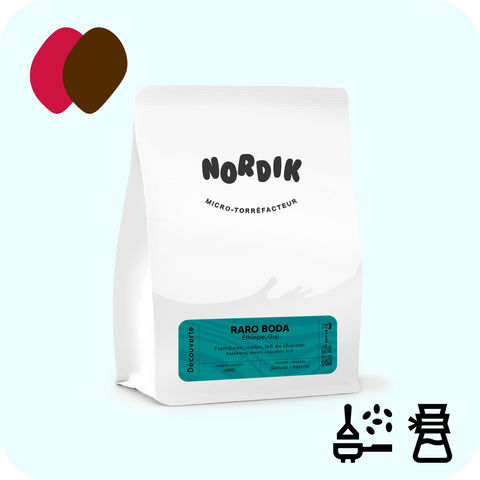

Nordik - Raro Boda
Coffee beans
*Orders from roasters outside Montreal may result in additional delays.
Notes - Raspberry, melon and milk chocolate
Origin - Ethiopia
Process - Natural
Profiles - Fruity and chocolatey
Recommendations - Espresso and discovery filter
Negusse Debela didn't start his career in the coffee industry. Known in Ethiopia as a computer expert, he ran a successful business importing computer parts. Coffee might not have seemed like a natural fit, but a trip to Minnesota changed everything for him. At a cafe, he tasted some rotten coffee that gave him a revelation about the potential of Ethiopian coffee.
Upon his return, Mr. Negusse began visiting coffee processing sites throughout southern Ethiopia to better understand growing and processing methods. Determined to make SNAP one of Ethiopia's premier coffee exporters, he immediately set to work.
Negusse has since acquired land so SNAP can process its own coffee and expanded its operations to include processing sites in Nensebo, Yirgacheffe, and Guji. In early 2019, SNAP completed construction of its own dry mill for export, giving it complete control over its product and quality.
Ethiopia has no shortage of agricultural research when it comes to its coffee varieties. Although some heirloom varieties are still widely cultivated, the term "landrace" has become more popular. The Jimma Agricultural Research Center (JARC) and the Ethiopian Biodiversity Institute (EBI) maintain key Arabica gene banks. JARC, in particular, has been active in breeding and improving coffees for cultivation. Thus, the blanket term "landrace" does not do justice to the genetic diversity and work being done in Ethiopia. Many indigenous heirloom varieties are actually hybrids or selected cultivars. These varieties are well documented and were recently made publicly available in Getu Bekele and Timothy Hill's over 100-page catalog of coffees grown in Ethiopia.

